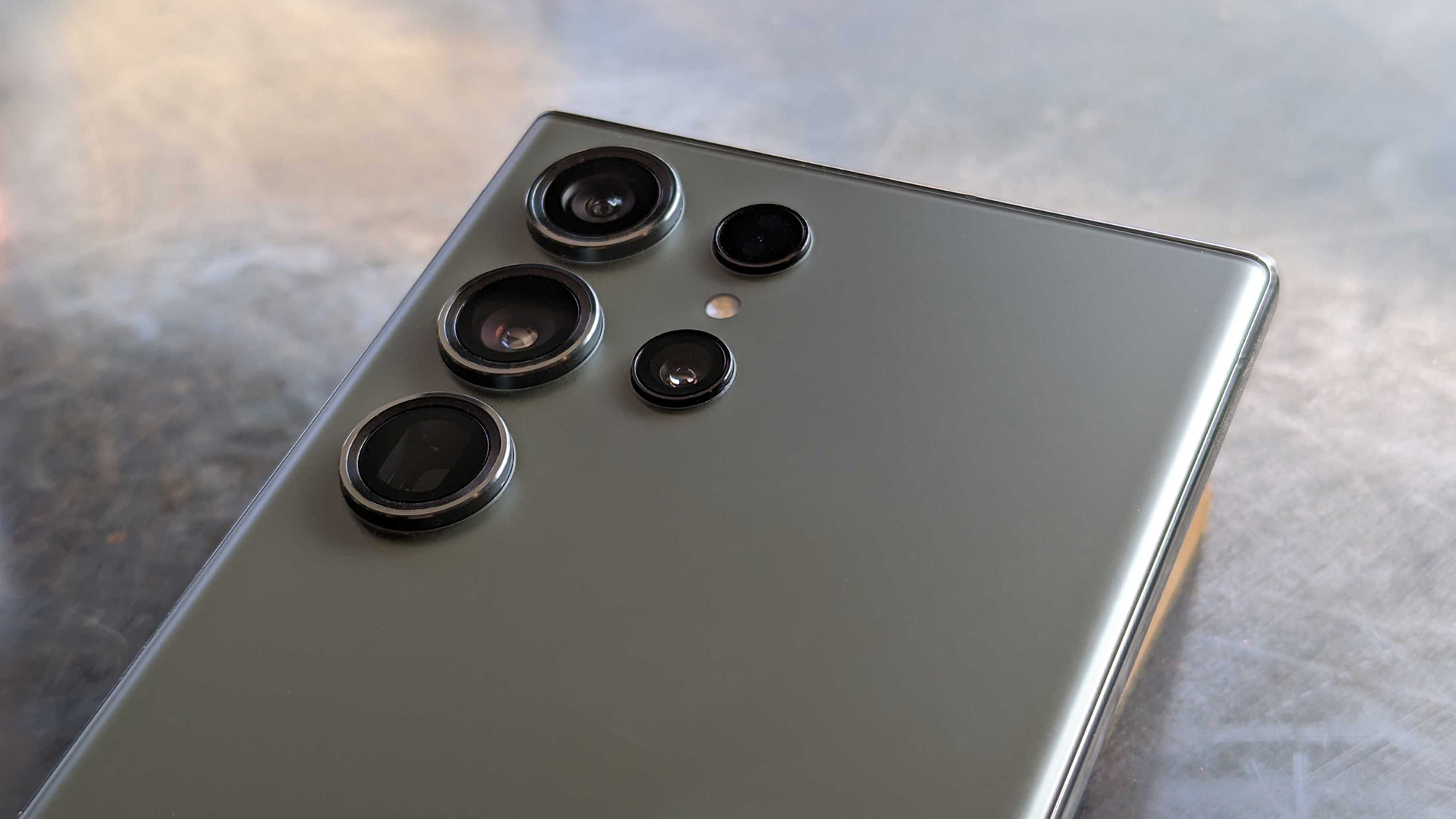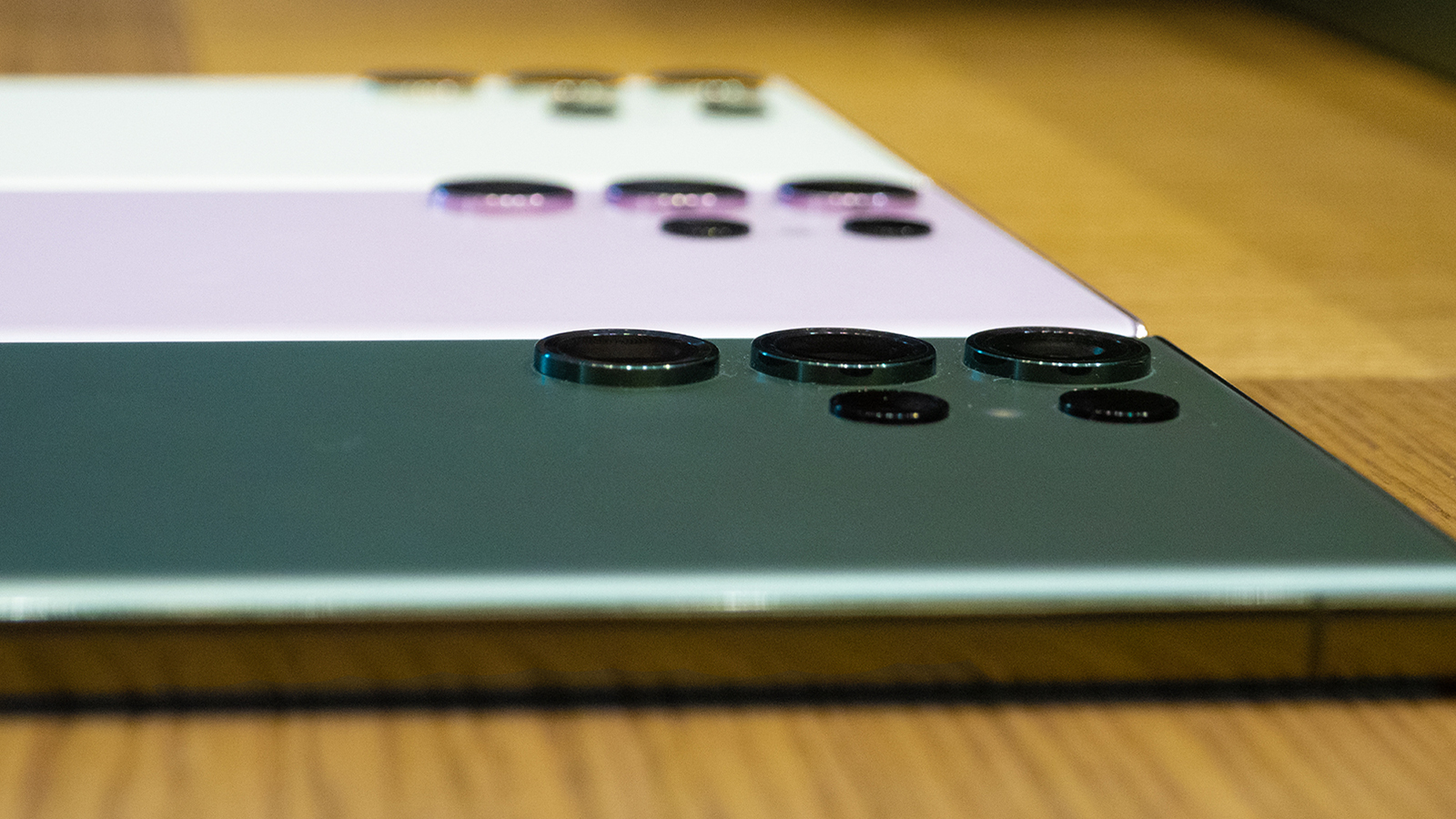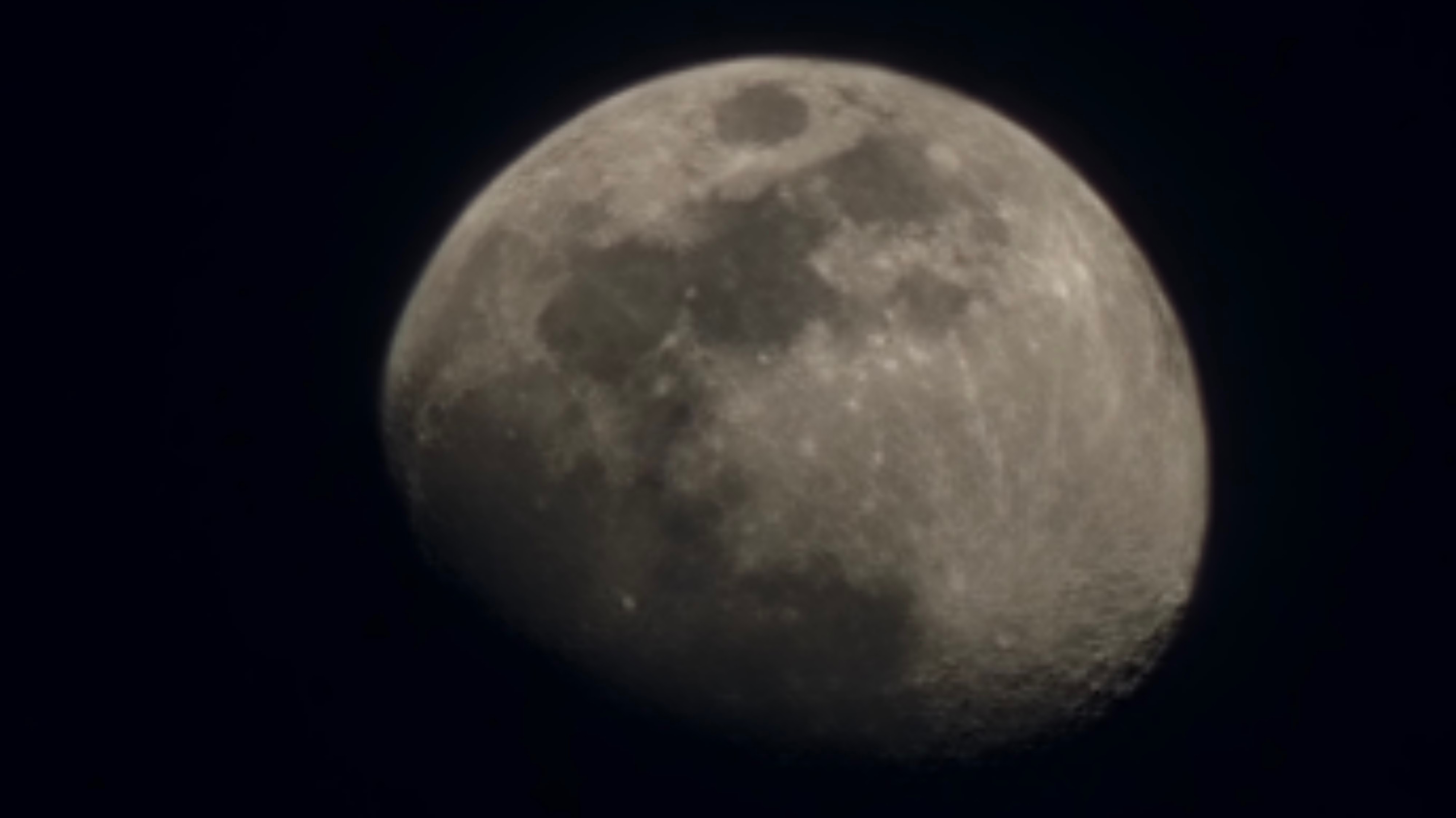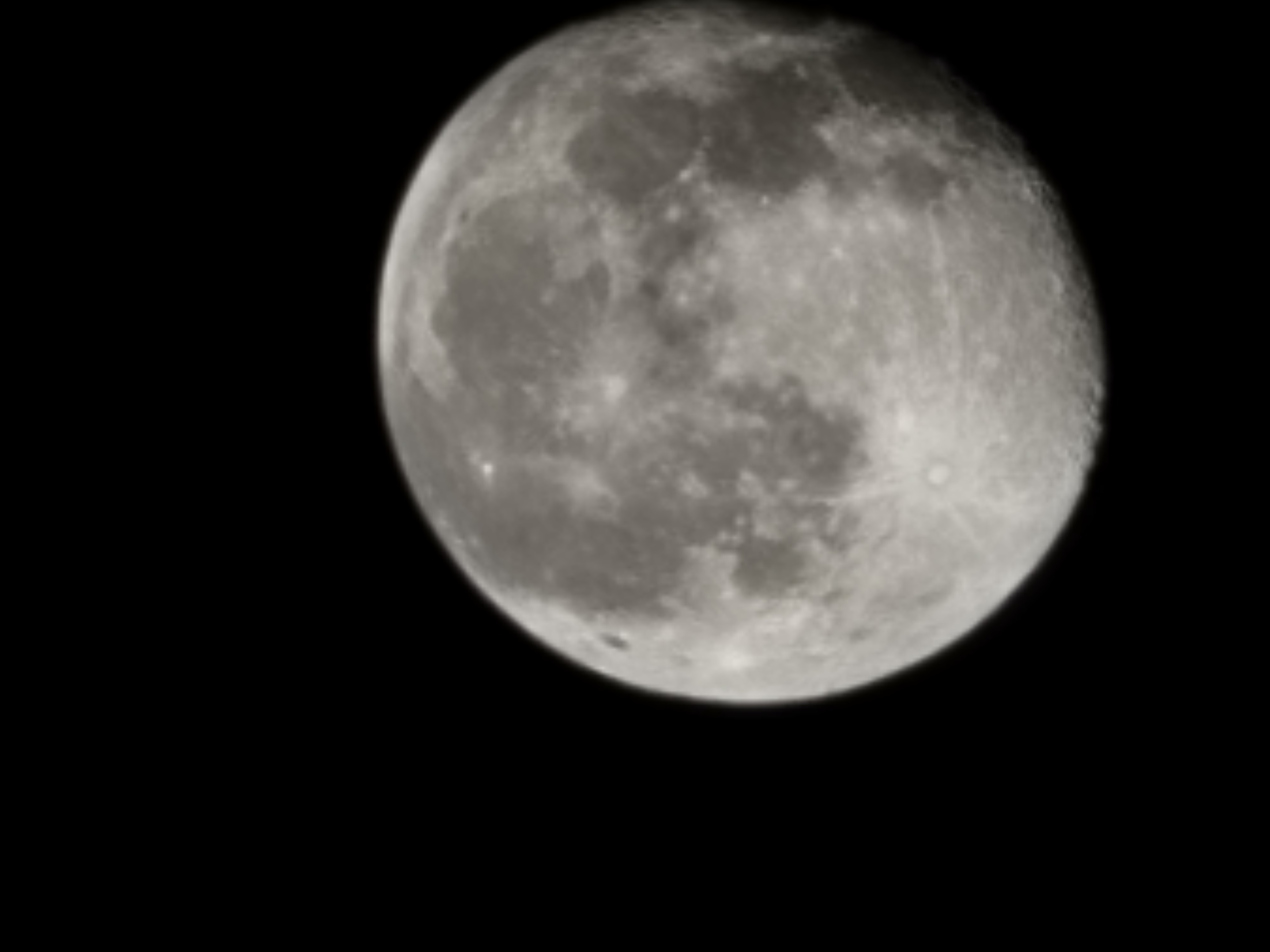Samsung's Galaxy S23 Ultra shoots for the moon and fakes the landing
Of course it's fake, all photos are fake

The Samsung Galaxy S23 Ultra can make an amazing photograph of the moon. How it does this is up for debate that is more philosophical than scientific. The phone has a real 10X optical zoom, and there isn’t a farther-reaching lens on a smartphone today. It has optical stabilization and clever tricks to help it digitally zoom and enhance the image. Is the final image of the moon fake? The question itself is silly.
Before I begin, there is a post on Reddit that claims to prove that Samsung is using digital enhancements to add detail to photographs of the moon. I tried to replicate the process the post uses to trick the Galaxy S23 Ultra and I was unsuccessful. There are many reasons for this, but I don’t think they really matter. Even if Samsung is doing what the Reddit post claims – which it has now denied – it hasn’t lied about anything, and it would be useless to call these photos ‘fake.’
Let’s talk first about what Samsung promises because it isn’t as much as you might imagine. Samsung never says that you can take an optically zoomed-in photograph of the moon and end up with the final results they show. There is always a trick involved. Even if it isn’t clear to the user what is happening when the camera uses its digital 100X zoom, it’s obvious the image has moved beyond the realm of ‘what you see is what you get.’
Scene Optimizer can add details to a photo
On a Samsung community board, a Moderator who seems to represent Samsung goes much further in explaining how the moon zoom photos work. This enhanced image processing has been happening on every Galaxy since the Galaxy S21. Details are being added. So-called ‘AI’ is being used to optimize the scene. If you don’t want this to happen, you can turn off the Scene Optimization mode, which is turned on by default.
If you just aim your 10X lens at the moon, you will get a terrible shot of the moon. If you zoom in past the 10X optical zoom range, you’ve already told the camera that it’s time to start working magic. When you pass 25X digital zoom, the camera AI considers the moon a possibility. It’s time to play some tricks. Here are the tricks you get.

There is the digital zoom that crops the image to make your subject larger. Then, there is image stabilization to keep the shot steady. On moon shots, the Galaxy S23 Ultra is using two types of image stabilization: optical stabilization and digital video stabilization.
Optical image stabilization (OIS) works by moving the lens to match the shake of your hands. Digital video stabilization works by capturing a much larger image than is necessary. The camera then finds the moon and keeps it centered in a smaller frame, cutting out everything around that isn’t needed. The final effect is that the moon remains still.
We already knew the camera was a magician
It’s not like we didn’t already know that smartphone cameras are full of tricks. We love those tricks. Samsung, like every other phone maker these days, uses a camera sensor with far more pixels than it needs. The final image will be 12MP by default.
The sensor on most smartphones is four times that resolution and phones average the data from four pixels down to one in a process called pixel binning. On the Galaxy S23 Ultra, the sensor can bin up to 16 pixels into one for the final image.
If my final pixel is the average of 16 possible pixels, is it the original photo? Is it enhanced by digital wizardry? I don’t really care.

I don’t take photos. I make photos. I’m not working with film, with one chance to get the proper exposure balance. I’m not practicing the sport of photography, in which only a true photograph resulting from my shooting skill can cross the finish line.
I make photos that look cool and that I want to share. I edit most of my photos in Lightroom already. I bring out colors that weren’t quite there. I remove phone lines that got in the way. I try to make people look their best in portraits, even if that means removing a blemish or a stain.
The Galaxy S23 Ultra isn’t taking a photo of the moon. It’s making a photo of the moon. It looks at the moon in its current phase and it adds details that you could see if you only had better equipment. Is it dishonest? No, silly, it’s the moon.
Shakespeare’s Juliet may remind us that the moon changes constantly, but it hasn’t changed materially in a few thousand years or so. We know exactly what the moon looks like today, what it has always looked like throughout our lifetimes, and what it will look like tomorrow.
It's just the moon, and we know what that looks like
you are only proving that you exist. Look, everyone, I can see the moon, just like the rest of this hemisphere
Why do you need to take a photograph of the moon? The moon is more than a quarter of a million miles away. It isn’t going anywhere, and it isn’t changing. I understand taking one good photo of the moon itself, maybe one, to see what the camera can do. I don’t understand making the moon a regular subject of your photography.
In fact, I don’t see why you’d ever need to take two pictures of the moon when there are amazing telescopes and professional photographers who will give you a better picture for free. You don’t need a second moon photo from your phone camera. You just need one.
Your first photo of the moon can be pretty. Your second is mundane. If you take more photos of the moon, you are only proving that you exist. Look, everyone, I can see the moon, just like the rest of this hemisphere.
Are you proving that you are a great photographer? Are you sharing your enjoyment of the moon? Waxing elegantly about our celestial dance partner? Write a poem, instead.
Samsung hasn't done anything wrong
I wanted to get mad about this, but I cannot. I bought a Galaxy S23 Ultra with my own money, and if Samsung lied to me about its capabilities, I want to hold them accountable. That’s not the case here. I cannot find a single instance of Samsung showing off moon photos or astrophotography without making clear that digital enhancements are used.
You need to dig deeper to discover that those digital enhancements may include AI decisions, and the AI may add details to an image based on a recognized scene. Samsung isn’t putting that information anywhere near its marketing for the Galaxy S23 Ultra’s cameras. It also isn’t making false promises. The camera makes great moon photos. This much is true.

Is the Galaxy S23 Ultra faking its moon photography? That’s a silly question, because photography is all fake. That’s not really the moon. That’s just a photo. The moon is hundreds of thousands of miles away, and this 10X zoom lens is the closest I’m going to get. If I want to see the real moon, there are rock samples at the Smithsonian.
In other words, Samsung isn’t faking the moon landing, it’s faking a photo of the moon. It isn’t adding details that may or may not truly exist. It’s adding provable details that we’ve been staring at for millenia.
Fake anything closer than the moon and it's trouble
I would get offended if Samsung’s camera changed the truth. I would be angry if it added a tiny flag from the moon landing or other details that we could never truly see. I would be angry if the AI was inaccurate. But it’s the moon. The AI can add details, and they’ll be perfect. In this case, I’m fine with it.
I don’t want the AI to add details any closer to earth. I don’t want the camera to add friends to my birthday party who didn’t really show up. I don’t want it to make people smile if they were frowning. AI can already make you seem like you’re paying attention during a webcam meeting. If my smartphone is going to truly change people, it needs to be a feature I activate, not a hidden AI trick.
I’ll be keeping a wary eye on where this technology leads, but so far I’m not offended, because I got a really cool moon shot. There’s nothing fake about it, even if my lens didn’t really capture it. This isn’t an offensive addition or change. It lines up perfectly with my intentions. I wanted a great photo of the moon. The Galaxy S23 Ultra makes one for me.
Get daily insight, inspiration and deals in your inbox
Sign up for breaking news, reviews, opinion, top tech deals, and more.

Phil Berne is a preeminent voice in consumer electronics reviews, starting more than 20 years ago at eTown.com. Phil has written for Engadget, The Verge, PC Mag, Digital Trends, Slashgear, TechRadar, AndroidCentral, and was Editor-in-Chief of the sadly-defunct infoSync. Phil holds an entirely useful M.A. in Cultural Theory from Carnegie Mellon University. He sang in numerous college a cappella groups.
Phil did a stint at Samsung Mobile, leading reviews for the PR team and writing crisis communications until he left in 2017. He worked at an Apple Store near Boston, MA, at the height of iPod popularity. Phil is certified in Google AI Essentials. He has a High School English teaching license (and years of teaching experience) and is a Red Cross certified Lifeguard. His passion is the democratizing power of mobile technology. Before AI came along he was totally sure the next big thing would be something we wear on our faces.